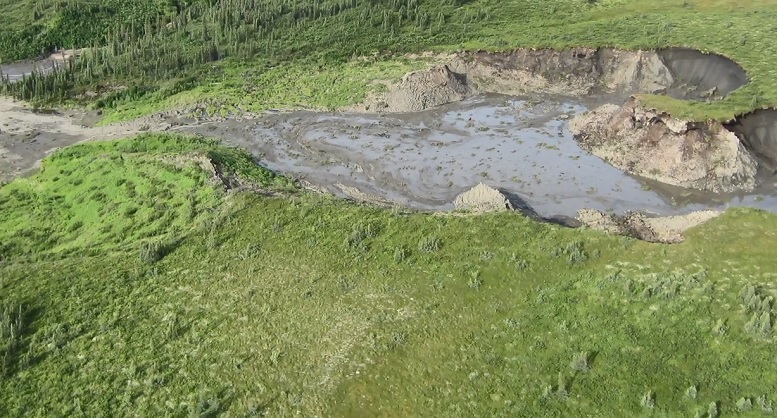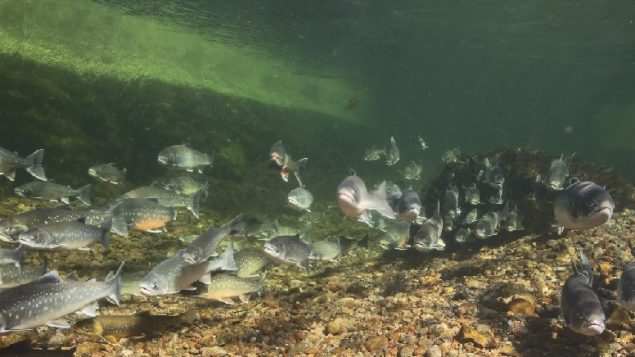While we often think of the Arctic and the huge ocean areas it encompasses, but there are also vast resources of freshwater in the lakes, rivers, streams and wetlands.
Many reports on the changing weather and climate have focused on changes to the land, as in permafrost melt, and the sea with melting ice. However the same warming affecting those Arctic environments is also affecting the immensely important freshwater resources. The changes effect all life from the tiniest diatoms and algae, to zooplankton, aquatic plants, up to the fish at the top of ecosystem.

The report notes that permafrost melt is resulting in some cases of mud and sediment flowing into streams and lakes smothering species and changing the ecosystem (CAFF-video)
A report presented earlier this month at the Arctic Council Ministerial meeting in Finland looked at the changes already seen and those expected. The report is called State of the Arctic Freshwater Biodiversity.
It was presented to the eight Arctic states- Canada, Denmark, Finland, Iceland, Norway, the Russian Federation, Sweden and the US, as well to leaders from the six indigenous Permanent Participant organizations and other key stakeholders.
The report said freshwater species numbers could actually increase in the Arctic as warming creates a more welcoming environment for southern species to edge northward. However it also notes that some unique and iconic Arctic species adapted to the cold climate will be further challenged and in some instances may disappear thus changing the Arctic’s biodiversity.
The warming is not the only issue as ongoing development in the north results in fragmented habitat, including damming of rivers, increased pressure from fisheries and over-fishing,
Another report dealt with the environmental and ecosystem effects from various forms of pollution and contaminants from development in the north and elsewhere, in terms of regional, national, and transboundary international pollution. The assessment was titled ‘Biological Effects of Contaminants on Arctic Wildlife and Fish.
Other reports presented at this 11th gathering included assessments of underwater marine noise, ocean acidification and warming, and marine litter and microplastics in the Arctic and a climate change update.
Conservation of Arctic Flora and Fauna (CAFF) – Youtube
Additional information-sources
- State of Arctic Biodiversity report
- IISD press release: Sustainable development of Arctic Ecosystems and People
- ‘Biological Effects of Contaminants on Arctic Wildlife and Fish,
- Arctic Freshwater in a changing climate
- World Meteorological Organization; press statement:ocean warming-acidification
- Arctic Climate Change Update 2019







For reasons beyond our control, and for an undetermined period of time, our comment section is now closed. However, our social networks remain open to your contributions.